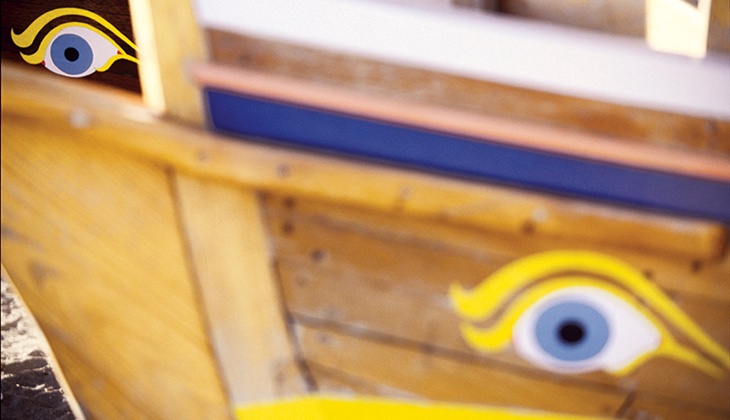The word jábega transports many locals of Málaga to former times when the use of this kind of boat was a form of earning a living. It will make others, probably younger, think about a more recent use, linked to sport and teamwork. For those who are not familiar with them, jábegas are vessels that are intimately tied up with the fishing and maritime tradition of the city of Málaga and the Costa del Sol.
Jábega boats were used by Málaga fishermen to fish by means of a technique based on trawling close to the shore. This type of boat is one of the most attractive that can be found on the coasts of Spain. It is made entirely of wood and is propelled by oars. A large oar called the espadilla is used to steer the boat. The boat is usually steered by the captain.
The jábega is of Phoenician origin and, as such, it has a sleek and elegant design characterised by the brightness of its colours and two fundamental details in its prow: the tip of the prow is often carved in the shape of a snake or pickaxe handle, and two painted eyes constitute a sacred symbol of life. On special occasions, the jábegas are decorated with flowers and designs of lines and circles. It is also possible to find religious motifs painted onto some of them, depending on the owner's beliefs.
The jábega regattas on the Costa del Sol
In the 19th century a new job was found for the traditional fishing jábegas: their use for sporting purposes in regattas. It was the fishermen themselves who came up with this idea. This was, first of all, a way to continue enjoying using their boats at sea and, secondly, to preserve this cultural element in Málaga society.

The modern era of jábega regattas began in the 1980s. A provincial league was created and the boats that participated represented the different municipalities and neighbourhoods of the Costa del Sol. There has also been a growth in associations created to promote and regularise this competition. Today, the province of Málaga continues to be home to this type of sports activities.
Whether for recreational or sporting use, the functioning of the jábega is the same. The number of rowers ranges from 7 to 9. Rowers are accompanied by several other crew members when the boats are used for fishing: the calador (casts the net), the plomero (drops the weights), the contador (measures the rope that they are letting out) and the captain.
Nowadays, the jábegas impress every summer in the Provincial Council of Málaga's Liga de Jábegas, a competition promoted by the Council and the Traditional Rowing Association (ART) which takes place along the Málaga coastline every summer, in a combination of sport, history and fun.








